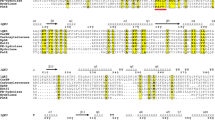Abstract
Many ecosystems are currently co-contaminated with pesticides and heavy metals, such as chlorpyrifos and cadmium. A promising strategy to remediate mixed chlorpyrifos-cadmium-contaminated sites is the use of chlorpyrifos-degrading bacteria endowed with cadmium removal capabilities. In this work, a gene coding for synthetic phytochelatins (EC20) with high cadmium-binding capacity was introduced into a chlorpyrifos-degrading bacterium, Stenotrophomonas sp. YC-1, resulting in an engineered strain with both cadmium accumulation and chlorpyrifos degradation capabilities. To improve the cadmium-binding efficiency of whole cells, EC20 was displayed on the cell surface of Stenotrophomonas sp. YC-1 using the truncated ice nucleation protein (INPNC) anchor. The surface localization of the INPNC-EC20 fusion protein was demonstrated by cell fractionation, Western blot analysis, and immunofluorescence microscopy. Expression of EC20 on the cell surface not only improved cadmium binding, but also alleviated the cellular toxicity of cadmium. As expected, the chlorpyrifos degradation rate was reduced in the presence of cadmium for cells without EC20 expression. However, expression of EC20 (higher cadmium accumulation) completely restored the level of chlorpyrifos degradation. These results demonstrated that EC20 expression not only enhanced cadmium accumulation, but also reduced the toxic effect of cadmium on chlorpyrifos degradation.



Similar content being viewed by others
References
Alkorta I, Hernández-Allica J, Becerril JM, Amezaga I, Albizu I, Garbisu C (2004) Recent findings on the phytoremediation of soils contaminated with environmentally toxic heavy metals and metalloids such as zinc, cadmium, lead, and arsenic. Rev Environ Sci Biotechnol 3:71–90
Anwar S, Liaquat F, Khan QM, Khalid ZM, Iqbal S (2009) Biodegradation of chlorpyrifos and its hydrolysis product 3,5,6-trichloro-2-pyridinol by Bacillus pumilus strain C2A1. J Hazard Mater 168:400–405
Bae W, Mehra R (1997) Metal-binding characteristics of a phytochelatin analog (Glu-Cys)2Gly. J Inorg Biochem 68:201–210
Bae W, Chen W, Mulchandani A, Mehra R (2000) Enhanced bioaccumulation of heavy metals by bacterial cells displaying synthetic phytochelatins. Biotechnol Bioeng 70:518–523
Bae W, Mulchandani A, Chen W (2002) Cell surface display of synthetic phytochelatins using ice nucleation protein for enhanced heavy metal bioaccumulation. J Inorg Biochem 88:223–227
Chen L, Qu G, Sun X, Zhang S, Wang L, Sang N, Du Y, Liu J, Liu S (2013) Characterization of the interaction between cadmium and chlorpyrifos with integrative techniques in incurring synergistic hepatoxicity. PLoS ONE 8:e59553
de Lorenzo V, Eltis L, Kessler B, Timmis KN (1993) Analysis of Pseudomonas gene products using lacI q/Ptrp-lac plasmids and transposons that confer conditional phenotypes. Gene 123:17–24
Garg B, Dogra RC, Sharma PK (1999) High-efficiency transformation of Rhizobium leguminosarum by electroporation. Appl Environ Microbiol 65:2802–2804
Kortenkamp A, Faust M, Scholze M, Backhaus T (2007) Low-level exposure to multiple chemicals: reason for human health concerns? Environ Health Perspect Suppl 1:106–114
Li X, He J, Li S (2007) Isolation of a chlorpyrifos-degrading bacterium, Sphingomonas sp. strain Dsp-2, and cloning of the mpd gene. Res Microbiol 158:143–149
Li L, Kang DG, Cha HJ (2004) Functional display of foreign protein on surface of Escherichia coli using N-terminal domain of ice nucleation protein. Biotechnol Bioeng 85:214–221
Liu Z, Yang C, Qiao C (2007) Biodegradation of p-nitrophenol and 4-chlorophenol by Stenotrophomonas sp. FEMS Microbiol Lett 277:150–156
Lu P, Li Q, Liu H, Feng Z, Yan X, Hong Q, Li S (2013) Biodegradation of chlorpyrifos and 3,5,6-trichloro-2-pyridinol by Cupriavidus sp. DT-1. Bioresour Technol 127:337–342
Mansour SA, Belal MH, Abou-Arab AAK, Gad MF (2009) Monitoring of pesticides and heavy metals in cucumber fruits produced from different farming systems. Chemosphere 75:601–609
Ryan RP, Monchy S, Cardinale M, Taghavi S, Crossman L, Avison MB, Berg G, van der Lelie D, Dow JM (2009) The versatility and adaptation of bacteria from the genus Stenotrophomonas. Nat Rev Microbiol 7:514–525
Said WA, Lewis DL (1991) Quantitative assessment of the effects of metals on microbial degradation of organic chemicals. Appl Environ Microbiol 57:1498–1503
Salem M, Brim H, Hussain S, Arshad M, Leigh MB, Zia-ul-hassan (2008) Perspectives on microbial cell surface display in bioremediation. Biotechnol Adv 26:151–161
Sambrook J, Russel DW (2001) Molecular cloning: A laboratory manual, 3rd edn. Cold Spring Harbor Laboratory Press, Cold Spring Harbor, New York
Sandrin TR, Maier RM (2003) Impact of metals on the biodegradation of organic pollutants. Environ Health Perspect 111:1093–1101
Schmid D, Pridmore D, Capitani G, Battistuta R, Nesser JR, Jann A (1997) Molecular organization of the ice nucleation protein InaV from Pseudomonas syringae. FEBS Lett 414:590–594
Singh BK (2009) Organophosphorus-degrading bacteria: ecology and industrial applications. Nat Rev Microbiol 7:156–164
Singh BK, Walker A (2006) Microbial degradation of organophosphorus compounds. FEMS Microbiol Rev 30:428–471
Singh BK, Walker A, Morgan JAW, Wright DJ (2004) Biodegradation of chlorpyrifos by enterobacter strain B-14 and its use in bioremediation of contaminated soils. Appl Environ Microbiol 70:4855–4863
Xu G, Zheng W, Li Y, Wang S, Zhang J, Yan Y (2008) Biodegradation of chlorpyrifos and 3,5,6-trichloro-2-pyridinol by a newly isolated Paracoccus sp. strain TRP. Int Biodeterior Biodegrad 62:51–56
Yang L, Zhao Y, Zhang B, Yang C, Zhang X (2005) Isolation and characterization of a chlorpyrifos and 3,5,6-trichloro-2-pyridinol degrading bacterium. FEMS Microbiol Lett 251:67–73
Yang C, Liu N, Guo X, Qiao C (2006) Cloning of mpd gene from a chlorpyrifos-degrading bacterium and use of this strain in bioremediation of contaminated soil. FEMS Microbiol Lett 265:118–125
Acknowledgments
The authors gratefully acknowledge the financial support from the National High Technology Research and Development Program of China (“863” Program, no. 2013AA06A210), the National Natural Science Foundation of China (no. 31300032), the Open Fund of the State Key Laboratory of Microbial Metabolism, Shanghai Jiao Tong University (no. MMLKF13-06), and the Open Fund of State Key Laboratory of Microbial Resources, Institute of Microbiology, Chinese Academy of Sciences (no. SKLMR-20130604).
Author information
Authors and Affiliations
Corresponding author
Electronic supplementary material
Below is the link to the electronic supplementary material.
Rights and permissions
About this article
Cite this article
Liu, R., Jiang, H., Xu, P. et al. Engineering chlorpyrifos-degrading Stenotrophomonas sp. YC-1 for heavy metal accumulation and enhanced chlorpyrifos degradation. Biodegradation 25, 903–910 (2014). https://doi.org/10.1007/s10532-014-9709-y
Received:
Accepted:
Published:
Issue Date:
DOI: https://doi.org/10.1007/s10532-014-9709-y




